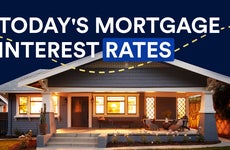
Rates increase | Mortgage rates for today, April 26, 2024
The current average rate for a 30-year fixed mortgage is 7.30, the average rate for the benchmark 15-year fixed mortgage is 6.71 percent, and the average rate on a 5/1 ARM is 6.78 percent.
Whether you're looking to buy or refinance, our daily rates pieces will help you stay up to date on the market's average rates.

The current average rate for a 30-year fixed mortgage is 7.30, the average rate for the benchmark 15-year fixed mortgage is 6.71 percent, and the average rate on a 5/1 ARM is 6.78 percent.

Today's average rate for the benchmark 30-year fixed mortgage is 7.30, the average rate for a 15-year fixed mortgage is 6.67 percent, and the average 5/1 ARM rate is 6.53 percent.

The average rate you'll pay for a 30-year fixed mortgage today is 7.29, the average rate for the benchmark 15-year fixed mortgage is 6.72 percent, and the average 5/1 ARM rate is 6.69 percent.

Today's average rate for the benchmark 30-year fixed mortgage is 7.30, the average rate for the benchmark 15-year fixed mortgage is 6.76 percent, and the average 5/1 ARM rate is 6.89 percent.

Today's average rate for the benchmark 30-year fixed mortgage is 7.29, the average rate you'll pay for a 15-year fixed mortgage is 6.74 percent, and the average 5/1 ARM rate is 6.68 percent.